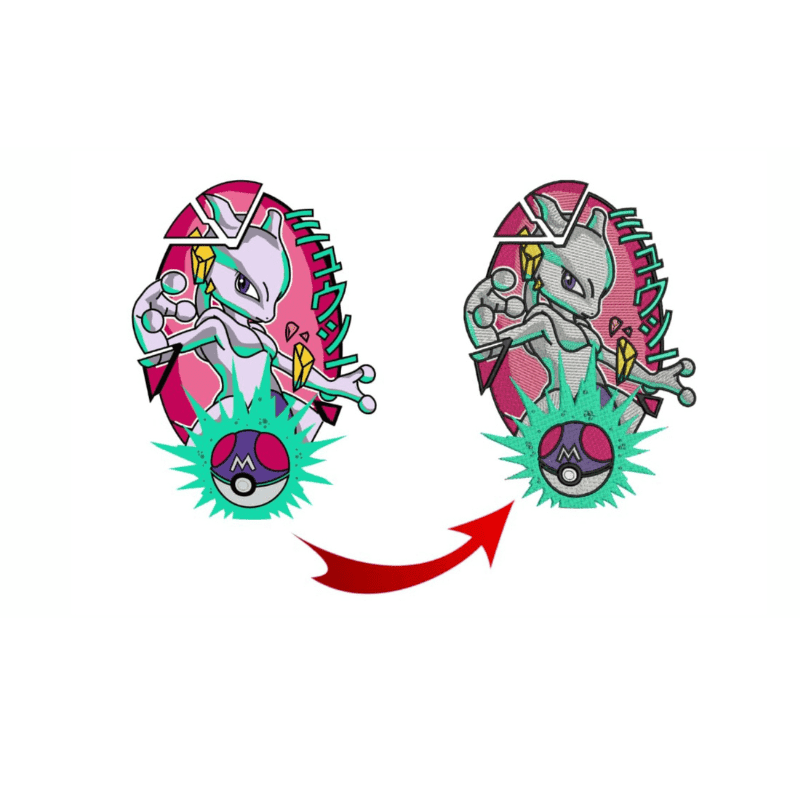Grasping the Needlework Digitizing Process: Your Ultimate Overview
Needlework digitizing is a meticulous craft that needs accuracy and experience to translate complex designs right into digital styles for equipment embroidery. As artisans get started on this journey to understand the embroidery digitizing process, a detailed understanding of the basics sets the structure for quality. However, past the basic understanding lies a realm of innovative software, specialized tools, and nuanced methods waiting to be discovered. By delving right into the nuances of digitizing, one can open a globe of creative possibilities and elevate their embroidery projects to new heights.

Comprehending Embroidery Digitizing Fundamentals
Embroidery digitizing fundamentals develop the foundation upon which complex styles are equated into machine-readable styles for exact sewing. This preliminary action in the needlework digitizing procedure is critical for making certain that the last stitched item is a loyal depiction of the initial style. Comprehending embroidery digitizing basics involves grasping key concepts such as stitch kinds, sew instructions, density, rug, and pull compensation.
Sew kinds play a crucial function in identifying the visual and textural outcome of the stitched style. By choosing the suitable stitch type, whether it be satin, fill, or running stitch, digitizers can achieve the wanted result and improve the general quality of the needlework. Furthermore, stitch instructions influences the circulation and measurement of the design, while density determines the spacing and insurance coverage of the stitches.
Moreover, rug stitching gives stability to the design by safeguarding the material and preventing distortion throughout the needlework process. Draw payment is another necessary consideration to neutralize the all-natural tendency of textile to agreement when stitched. Mastering these needlework digitizing fundamentals is basic for developing professional-quality stitched products.
Selecting the Right Digitizing Software Program
Choosing the suitable digitizing software program is a crucial decision that significantly impacts the efficiency and quality of the embroidery digitizing procedure. Digitizing for Embroidery. When choosing the best digitizing software program, it is important to think about aspects such as the intricacy of layouts you intend to create, the user-friendliness of the software, the level of customer support provided, and the compatibility with your embroidery maker
There are numerous digitizing software program alternatives readily available in the market, ranging from basic programs for novices to sophisticated software application for specialist digitizers. Some prominent selections consist of Wilcom EmbroideryStudio, Hatch Needlework Software Application, and PulseID. These software application bundles use a wide variety of devices and attributes to aid you develop detailed layouts effortlessly.
Prior to deciding, it is a good idea to check out the different software options through totally free trials or trials to determine which one ideal matches your requirements. Furthermore, checking out reviews and seeking referrals from seasoned digitizers can supply beneficial understandings into the strengths and weak points of each software program bundle (Digitizing for read the article Embroidery). By thoroughly assessing your requirements and contrasting the attributes of different digitizing software, you can make an informed selection that improves your embroidery digitizing operations
Digitizing Devices and Methods

Optimizing Design Settings for Embroidery
Grasping the ins and outs of layout setups is basic in attaining optimum cause the needlework digitizing procedure, structure upon the structure laid by recognizing digitizing devices and techniques. When enhancing style settings for embroidery, it is necessary to consider elements such as stitch kind, thickness, padding, draw compensation, and registration. Stitch kind selection impacts the total look of the style, with choices like satin, fill, and running stitches providing various textures and effects. Thickness describes the spacing and density of stitches, affecting the design's coverage and toughness. Correct rug stitching offers stability and protects against textile distortion, specifically for intricate designs or on stretchy materials. Draw settlement adjusts for material stretch during stitching, ensuring precise design duplication. Enrollment settings straighten different components of the style precisely, keeping general layout stability. By fine-tuning these layout settings, embroiderers can boost the high quality and accuracy of their embroidered productions.

Troubleshooting Common Digitizing Issues
When running into typical digitizing issues throughout the embroidery procedure, it is important to understand the origin and carry out Extra resources efficient remedies immediately. One common issue is stitch thickness problems, where stitches may be as well dense, creating the material to tighten, or too sporadic, resulting in voids in the design. Changing the stitch thickness setups in the digitizing software application can aid resolve this problem.
Another constant difficulty is thread breaks during the needlework process. This can happen as a result of different factors such as wrong tension settings, boring needles, or using low-grade thread. Making sure correct maintenance of the needlework machine, consisting of normal needle modifications and tension modifications, can lessen the event of thread breaks.
Additionally, style enrollment mistakes can result in misaligned elements within the embroidery style. Inspecting the style placement in the digitizing software and making required changes prior to sewing can aid in preventing this problem. By attending to these typical digitizing problems immediately and properly, you can make certain a smoother needlework procedure and high-quality finished products.
Conclusion
In final thought, understanding the needlework digitizing procedure needs a strong understanding of the fundamentals, the ideal option of software application, and knowledge of tools and techniques. Maximizing layout setups and fixing common digitizing issues are crucial actions in making sure premium embroidery outcomes. By complying with these steps vigilantly, one can achieve accuracy and effectiveness in the digitizing process.